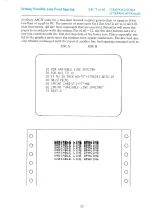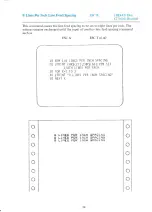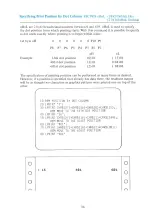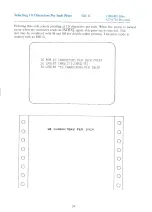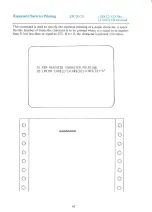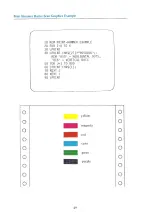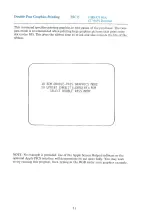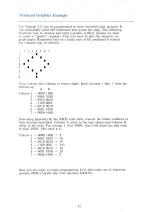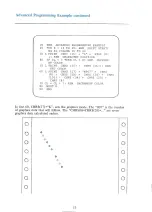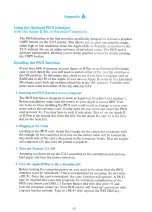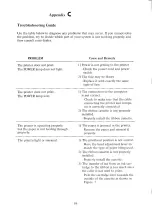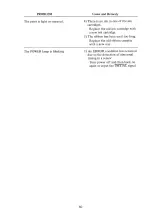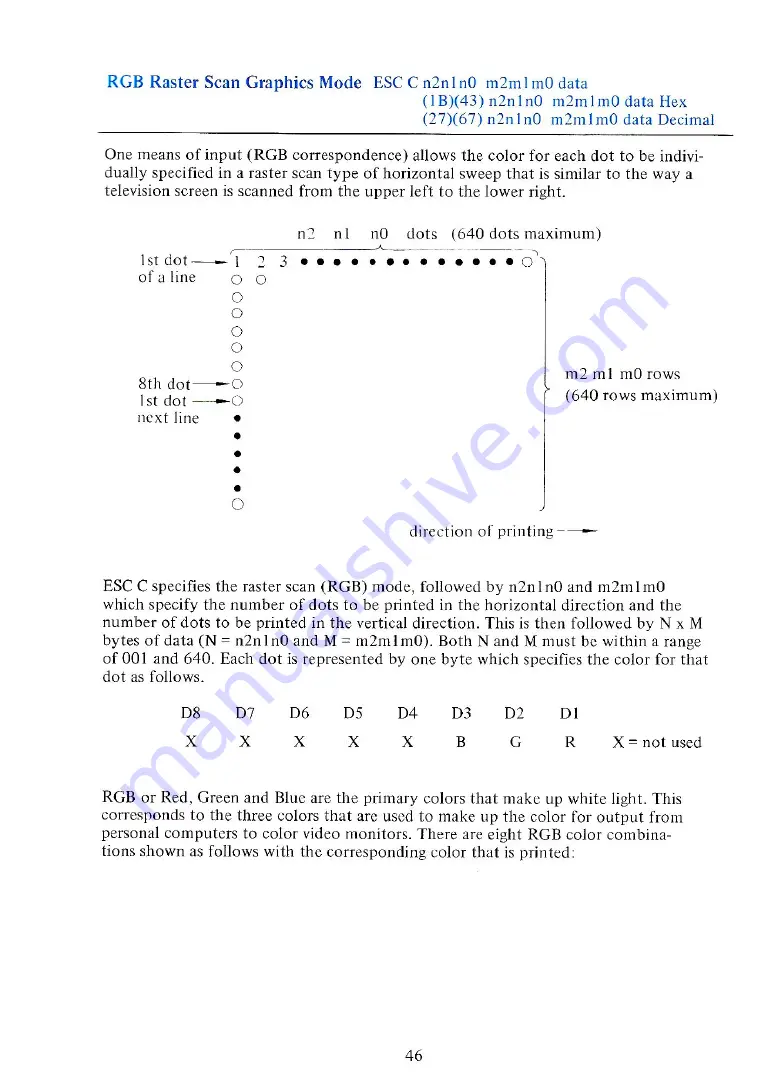
RGB
Raster
Scan
Graphics
Mode
ESC
Cn2n1n0O
m2m1m0
data
(1B)(43)
n2n1n0
m2m1m0
data
Hex
(27)(67)
n2n1InO
m2m1m0
data
Decimal
One
means
of
input
(RGB
correspondence)
allows
the
color
for
each
dot
to
be indivi-
dually specified
in
a
raster
scan
type
of horizontal
sweep
that
is similar
to
the
way
a
television
screen
is
scanned
from
the
upper
left
to
the
lower
right.
n2
nl
nO
dots
(640
dots
maximum)
=—__
*—
—
—Y
lstdot——
1
2
3
ewwneecveeveeeve0e
of
a
line
OOo
Oo
Oo
Oo
©
Oo
8th
dot—o
Ist
dot
——O
next
line
e
m2
ml
m0
rows
(640
rows
maximum)
Oeeee
direction
of
printing
-—~—
ESC
C
specifies
the
raster
scan
(RGB)
mode,
followed
by
n2n1n0
and
m2m1m0
which
specify
the
number
of dots
to
be
printed
in
the
horizontal
direction
and
the
number
of dots
to
be
printed
in
the
vertical
direction.
This
is
then
followed
by
N
x
M
bytes
of data
(N
=
n2n1n0
and
M
=
m2m1
m0).
Both
N and
M
must
be
within
a
range
of 001
and
640.
Each
dot
is
represented
by
one
byte
which
specifies
the
color
for
that
dot
as
follows.
D8
D7
D6
DS
D4
D3
D2
DI
Xx
Xx
x
x
x
B
G
R
X
=
not
used
RGB
or
Red,
Green
and
Blue
are
the
primary
colors
that
make
up
white
light.
This
corresponds
to
the
three
colors
that
are
used
to
make
up
the
color
for
output
from
personal
computers
to
color
video
monitors.
There
are
eight
RGB
color
combina-
tions
shown
as
follows
with
the
corresponding
color
that
is
printed:
46

